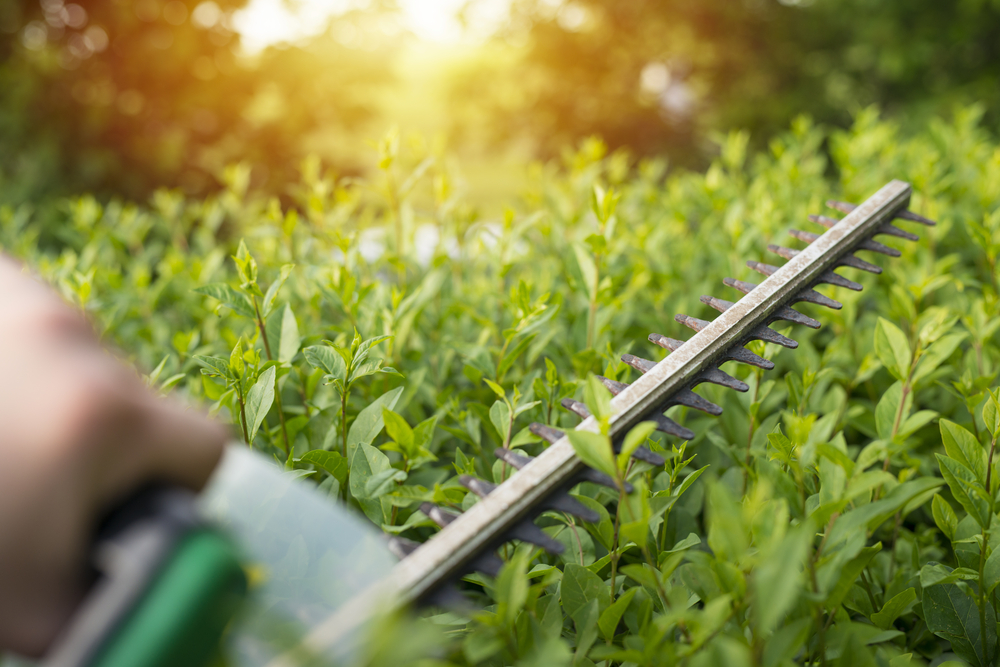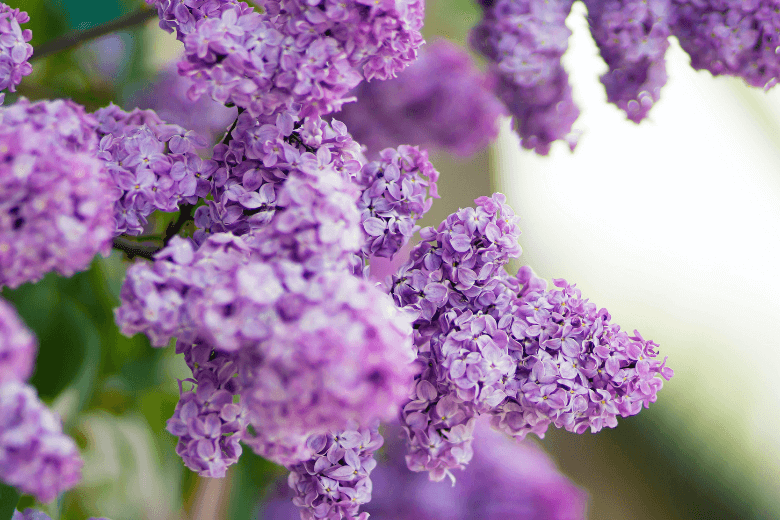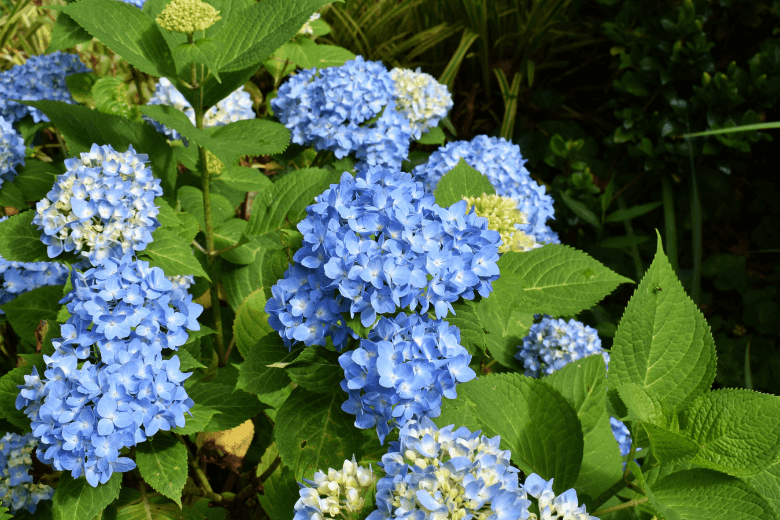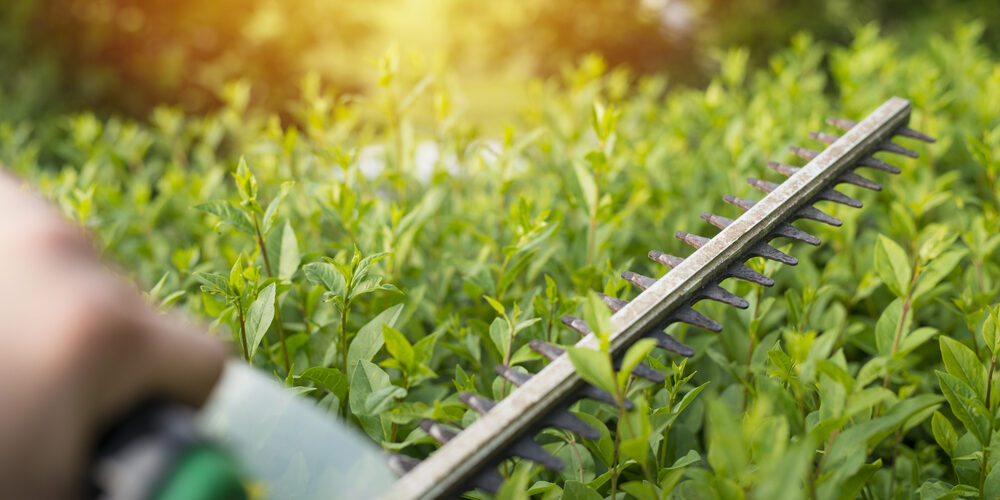Most savvy homeowners know that it’s very important to prune their trees for many reasons like tree health, hazard mitigation and aesthetics. (Read more about what is tree pruning and why it’s the secret to healthy trees). Pruning shrubs and bushes, however, is a task that is often overlooked by most people.
One of our clients recently compared the experience of fresh shrub pruning to the refreshing sensation of getting a haircut at the local salon, and we wholeheartedly concur! Just as a tidy haircut can renew your spirits, a meticulous pruning of your landscape shrubs can transform how you view your property. It’s like giving your garden a little spruce up, leaving you thinking, “Things are looking pretty sharp around here!” And the best part? There’s no need for any gel!
Knowing the best time to prune shrubs is tied into knowing what kind of shrubs you’re growing on your property. In this article we’ll talk about the different categories of shrubs, why pruning is important, and the best times of year to undertake this task (hint: it depends).

What Are the Different Kinds of Shrubs
In general, there are three basic types of shrubs:
- Evergreens: These plants keep their leaves all year round and grow very slowly. They rarely need to be pruned. Arborvitae, junipers and yews are common evergreens planted near houses. Examples of broad leaved evergreen shrubs include boxwoods, rhododendrons, and holly
- Spring-flowering deciduous shrubs: These shrubs are just what they sound like – they produce a colorful show of flowers in the spring. Deciduous means they shed their leaves in the fall and remain bare all winter. Examples of spring-flowering shrubs are lilacs, forsythia, viburnums, honeysuckle, chokeberry, mock orange, and weigela
- Summer-flowering deciduous shrubs: Similar to the shrubs above, but they hold off on displaying their color until the summer months. These also lose their leaves in the fall. Examples of summer-flowering shrubs are hydrangeas, roses, Japanese spirea, rose-of-Sharon, potentilla, and smokebush.
Why Should You Prune Shrubs?
Pruning your landscape shrubs is an important task to put on your (or your arborist’s!) to-do list each year because it offers the following benefits:
- Control size: This can be important if you have a shrub in a small space, don’t want it to grow over your windows, or need to give space to another plant nearby.
- Maintain or rejuvenate appearance: Some shrubs grow quickly and can start to look messy and overgrown. Keeping them pruned can neaten their appearance and lend a tidiness to your overall landscape.
- Direct growth in an optimal direction: If you want a shrub to grow in a particular direction it can be pruned to encourage that growth.
- Influence flowering or fruiting: Some shrubs need strategic pruning to encourage them to put out a big display of flowers and fruit the following season.
- Rejuvenation of older plants: Shrubs that have become overgrown or neglected can benefit from some pruning to bring them back into a vibrant state and more natural shape.
- Remove interfering branches: Since most shrubs have multiple stems it’s easy for them to have crossing branches that need to be thinned out.

When is the Best Time to Prune Shrubs?
The timing of pruning is different depending on what type of shrub it is and when it flowers (except for evergreens). For example, to preserve the flowers, lilacs should be pruned after flowering in early spring. Since their flower buds set over the winter on year-old wood, if they are pruned in the winter the flower buds will be pruned off and you’ll see a reduction in blooms come spring.
Here’s the best time to prune shrubs according to what type they are.
Evergreens
These shrubs grow very slowly and rarely need to be pruned. If it gets to the point where they could benefit from some pruning make sure to hire a knowledgeable pruning professional because depending on what type of shrub it is they’ll need to use specific techniques and timing to maintain the form and health of the shrub.
Spring-Flowering Shrubs
Since they bloom on wood produced the year prior, you should prune them after blooming. Late spring/early summer (after blooming) is an ideal time to prune for maximum blooms the following year.
| Spring | Summer | Fall | Winter |
| Do not prune before flowering | Prune if plants are done flowering and not too hot | Prune before new flower buds set | Do not prune as flower buds are setting |
Examples of spring flowering shrubs:
- Lilac
- Forsythia
- Viburnum
- Honeysuckle
- Chokeberry
- Mock Orange
- Weigela

Summer-Flowering Shrubs
Summer-flowering shrubs bloom on new growth produced in the spring. Prune when dormant in the fall, winter or very early spring.
| Spring | Summer | Fall | Winter |
| Prune before budbreak | Do not prune | Prune once plant is dormant | Ideal time to prune while plant is dormant |
Examples of summer-flowering shrubs:
- Hydrangea
- Potentilla
- Roses
- Spirea
- Smokebush
Small shrub pruning is often taken on by homeowners. But, similar to a haircut, you might not notice a standard style, but you will definitely notice a terrible one. It’s easy to make improper cuts that harm the plant, cause bald spots (especially in evergreen shrubs) or make the plant look unbalanced. It’s also difficult to always know the best time to prune shrubs.
That’s why we recommend calling in the professionals to prune your shrubs. For us, shrub pruning is a fun artistic experience. Bonus points if you want your yew trimmed into a wild shape (though we haven’t mastered unicorns quite yet!).







